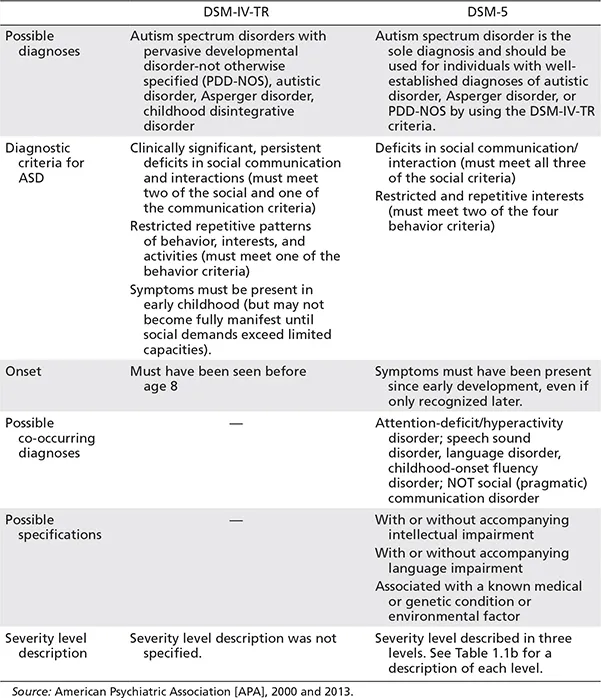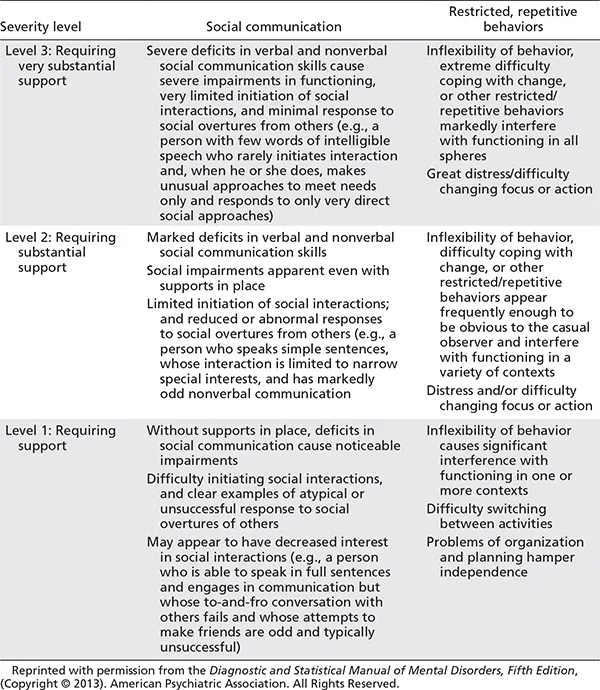
Treatment of Autism Spectrum Disorder
Evidence-Based Intervention Strategies for Communication & Social Interactions
- 640 pages
- English
- ePUB (mobile friendly)
- Available on iOS & Android
Treatment of Autism Spectrum Disorder
Evidence-Based Intervention Strategies for Communication & Social Interactions
About this book
To work effectively with individuals who have autism spectrum disorder (ASD), SLPs and other practitioners need in-depth knowledge on choosing and implementing interventions for communication and social challenges. The second edition of this bestselling textbook gives professionals the foundation they need to evaluate and compare today's widely used interventions—and determine which ones will promote the best outcomes for the people they serve.
The newest volume in the respected Communication and Language Intervention Series, this accessible text combines the expertise of more than 30 top autism authorities across multiple disciplines and specialties, including psychology, speech-language pathology, early intervention, special education, and AAC. Readers will get a thorough introduction to 14 evidence-based interventions, complete with key details on each intervention's theoretical and empirical basis, components, practical requirements, applications for both children and adults, and considerations for children from diverse cultural and linguistic backgrounds. Twelve video clips (available for streaming) illustrate the interventions in action, and highly relevant learning activities prepare SLPs and other practitioners to make sound decisions in scenarios they're likely to encounter in the field.
WHAT'S NEW:
- New chapter on assessment for treatment planning and progress monitoring
- New chapter on language and communication strengths and challenges often seen in children with ASD
- New in-depth profiles of three interventions not covered in the last edition: the Early Start Denver Model, The SCERTS® Model, and Social Skills Interventions
- Videos to demonstrate the newly added interventions
- Updates to reflect the DSM-5, which includes significant changes to the definition of ASD and new diagnostic criteria
- More information on inclusive practices
- Expanded discussion on working with children from culturally and linguistically diverse backgrounds
- A sample syllabus that demonstrates how faculty can integrate this book into a course
- Helpful new supplementary resource, Case Studies for the Treatment of Autism Spectrum Disorder, available for purchase as a bundle with the textbook
COVERS 14 INTERVENTIONS: Augmentative and Alternative Communication Strategies • The Early Start Denver Model (ESDM) • Discrete Trial Instruction • The Developmental, Individual-Difference, Relationship-Based (DIR) Model • Functional Communication Training • The JASPER Model • Enhanced Milieu Teaching • Early Social Interaction • Peer-Mediated Support Interventions • Pivotal Response Treatment • The SCERTS® Model • Social Skills Interventions • Social Stories™ • Video Modeling
GET THE BUNDLE: Buy this textbook as a bundle with its new companion casebook, Case Studies for the Treatment of Autism Spectrum Disorder. Through 14 realistic cases, readers will explore the types of clinical challenges they may face, see what the experts would recommend, and get exercises to help them practice their decision-making skills.
Frequently asked questions
- Essential is ideal for learners and professionals who enjoy exploring a wide range of subjects. Access the Essential Library with 800,000+ trusted titles and best-sellers across business, personal growth, and the humanities. Includes unlimited reading time and Standard Read Aloud voice.
- Complete: Perfect for advanced learners and researchers needing full, unrestricted access. Unlock 1.4M+ books across hundreds of subjects, including academic and specialized titles. The Complete Plan also includes advanced features like Premium Read Aloud and Research Assistant.
Please note we cannot support devices running on iOS 13 and Android 7 or earlier. Learn more about using the app.
Information


Table of contents
- Cover
- Title Page
- Series Page
- Copyright
- Contents
- About the Videos and Downloads
- Series Preface
- Editorial Advisory Board
- About the Editors
- About the Contributors
- Foreword
- Acknowledgments
- Chapter 1: Introduction to Treatment of Autism Spectrum Disorder (ASD)
- Chapter 2: Assessment for Treatment Planning and Progress Monitoring
- Chapter 3: Language and Communication in ASD: Implications for Intervention
- Chapter 4: Augmentative and Alternative Communication Strategies: Manual Signs, Picture Communication, and Speech-Generating Devices
- Chapter 5: The Early Start Denver Model (ESDM): Promoting Social Communication in Young Children With ASD
- Chapter 6: Discrete Trial Instruction
- Chapter 7: The Developmental, Individual-Difference, Relationship-Based (DIR) Model and Its Application to Children With ASD
- Chapter 8: Functional Communication Training: Treating Challenging Behavior
- Chapter 9: The JASPER Model for Children With Autism: Improving Play, Social Communication, and Engagement
- Chapter 10: Enhanced Milieu Teaching
- Chapter 11: Early Social Interaction
- Chapter 12: Peer-Mediated Support Interventions for Students With ASD
- Chapter 13: Pivotal Response Treatment
- Chapter 14: The SCERTS® Model: Social Communication, Emotional Regulation, and Transactional Supports
- Chapter 15: Social Skills Interventions
- Chapter 16: Social Stories™
- Chapter 17: Video Modeling for Persons With ASD
- Chapter 18: Future Directions
- Glossary
- Index
- Ad Page
- Back Cover